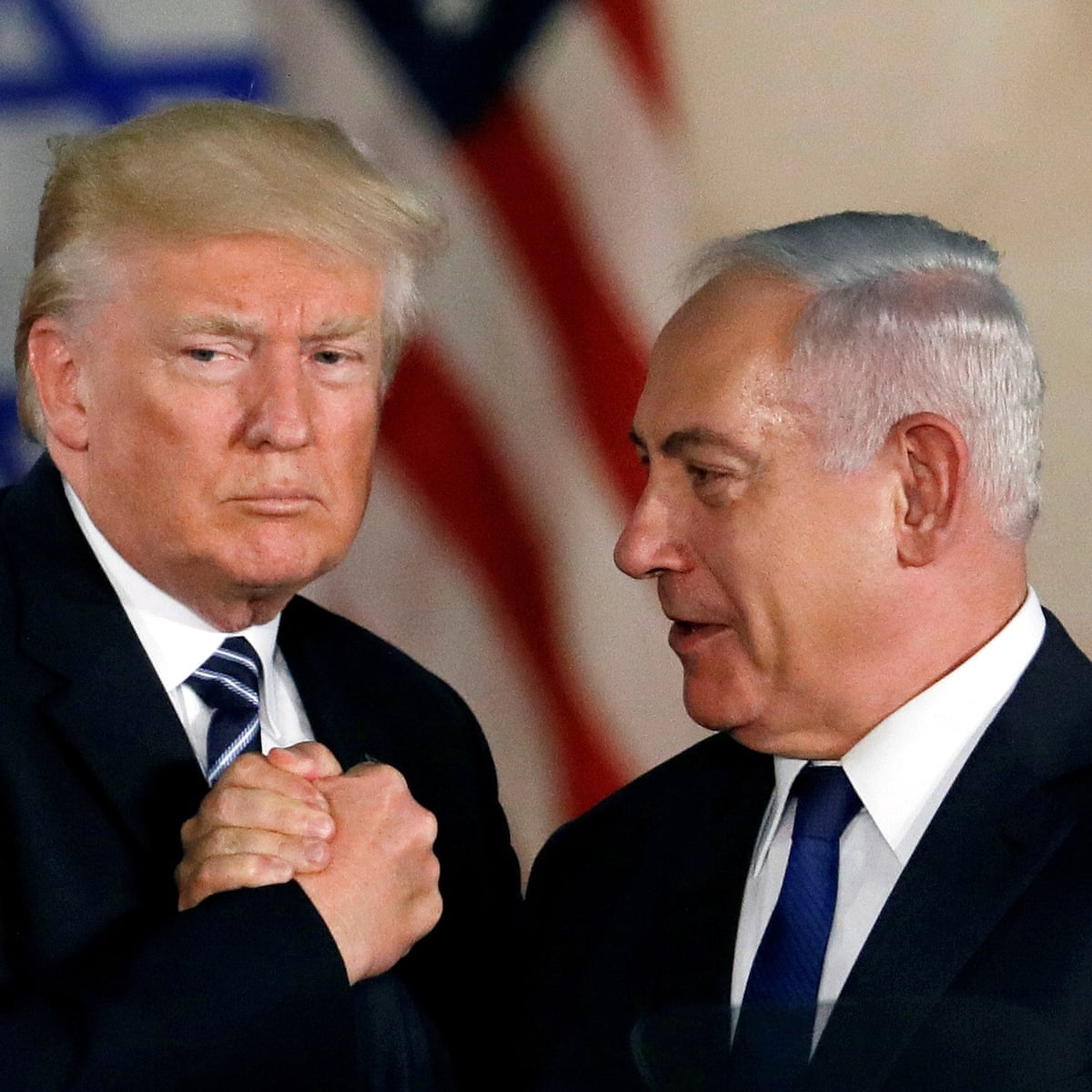India, Pakistan, and America’s Blind Spot
The ongoing tariff war between India and the United States should not be confused with questions about whether Donald Trump “stopped” an India–Pakistan war. Nor does it have anything to do with Ukraine. On the energy front, the facts speak for themselves: China buys more Russian oil than India, Europe buys more Russian LNG, and the United States buys more Russian uranium. The reality is simple—nearly every major power wants Russian energy. To pin the dispute on India’s purchases is misplaced.
The real debate is about economics at home. With mass tariffs and mass deportations, the Trump administration risks pushing the United States into stagflation, a concern voiced by nearly every leading economist—except, perhaps, Peter Navarro, caricatured in The Drum Report: Markets, Tariffs, and the Man in the Basement as the White House economist plotting from a basement office.
The India–Pakistan Paradox
The India–Pakistan flashpoint, however, deserves closer examination. India is in many ways a mirror image of Israel: both face neighbors that openly harbor hostile ideologies against their existence. America’s geopolitical compulsions in dealing with Pakistan can be understood—Washington has long sought to keep Islamabad neutral before striking Iran’s nuclear facilities.
But some actions defy logic. Allowing Pakistan’s Army Chief, General Asim Munir, to issue nuclear threats against India from U.S. soil is one such move. Even worse was the suggestion that Washington might “solve” Kashmir. That is geopolitical illiteracy.
Kashmir, like Gaza, is not fundamentally about land. Iran openly calls for Israel’s destruction. Pakistan’s Gazwa-e-Hind doctrine envisions military conquest of India and the forced conversion of all Indians to Islam. To dismiss this as fantasy is to ignore its repeated invocation by Pakistani leaders and militant groups. When Munir gave an incendiary speech in Queens, New York, and the Pahalgam terror attack followed soon after, the links were too stark to overlook. Pakistan’s state apparatus nurtures and guides terror outfits as virtual extensions of the ISI and Pakistan Army.
How the Ceasefire Happened
Here are the uncontested facts:
-
Pahalgam happened—a major terror strike.
-
India retaliated by wiping out roughly a dozen terror camps inside Pakistan and then announced it wanted to end the matter there.
This was an off-ramp offered to Pakistan from the start, but Islamabad rejected it. Later, Pakistan asked Washington for mediation. The U.S. conveyed the message to New Delhi, which reiterated that Pakistan should talk directly to India. Pakistan did, and a ceasefire was agreed.
In other words, India’s willingness for a ceasefire was clear from the beginning. It was not Washington finding middle ground, but rather relaying messages. If the UAE had played that role, the gratitude would have gone to Abu Dhabi.
Meanwhile, JD Vance, days before the ceasefire, publicly stated that India had every right to self-defense and that the conflict was “none of America’s business.” This underscored the U.S.’s ambivalence: it did not proactively broker peace as it is attempting in Ukraine.
A One-Sided War
India’s strikes revealed new realities. New Delhi demonstrated the ability to take control of Pakistani airspace, a shock to Islamabad. In terms of economy and military, Pakistan is dwarfed by India. Like Israel’s later strikes in Iran, India’s actions showed dominance in the skies.
The U.S. did play a role in transmitting messages, but it was India’s initiative and military capacity that shaped the ceasefire.
America’s Blind Spot on Ideology
Where Washington falters is in its blindness to Islamist ideology. Pakistan’s strategic culture mirrors the thinking of Hamas. Contrast this with China: after a single terrorist incident in Beijing, the CCP put a million Uyghurs into detention camps. Yet, Beijing continues to arm Pakistan. The hypocrisy is glaring.
To grasp India’s perspective, America must view Pakistan’s Islamist ideology as India and Israel do: a form of spiritual warfare with real military consequences. Without that clarity, Washington risks repeating errors.
The same spiritual illiteracy clouds U.S. views on China’s Tibet policy. The Dalai Lama’s successor is not chosen by a committee but is believed to be the same soul reborn in a new body. By dismissing this, the CCP reveals its inability to comprehend religious legitimacy—just as the U.S. establishment struggles to understand the ideological underpinnings of Pakistan’s hostility toward India.
The Larger Lesson
India’s decisive response after Pahalgam marked a milestone. It offered de-escalation on its own terms, fought from a position of strength, and revealed Pakistan’s vulnerabilities. No one believes Pakistan’s provocations are over—it is only a matter of time before the cycle repeats.
But the lesson stands: this is not simply territorial conflict. It is spiritual warfare with military implications—India–Pakistan as Iran–Israel. Unless America achieves clarity on this, its policies will remain reactive and inconsistent.
भारत, पाकिस्तान और अमेरिका की अंधी नज़र
भारत और अमेरिका के बीच चल रहा टैरिफ युद्ध इस सवाल से नहीं जुड़ा है कि क्या डोनाल्ड ट्रम्प ने भारत–पाकिस्तान युद्ध को रोका था। और न ही इसका कोई संबंध यूक्रेन से है। ऊर्जा के मोर्चे पर तथ्य साफ़ हैं: चीन भारत से अधिक रूसी तेल खरीदता है, यूरोप भारत से अधिक रूसी एलएनजी खरीदता है, और अमेरिका भारत से अधिक रूसी यूरेनियम खरीदता है। वास्तविकता यह है कि लगभग हर बड़ी शक्ति को रूसी ऊर्जा चाहिए। ऐसे में भारत पर उंगली उठाना बेमानी है।
असल बहस अर्थव्यवस्था की है। बड़े पैमाने पर टैरिफ और बड़े पैमाने पर निर्वासन की ट्रम्प की नीतियाँ अमेरिका को स्टैगफ्लेशन (मुद्रास्फीति और ठहराव) की ओर धकेल रही हैं। लगभग हर अग्रणी अर्थशास्त्री इस खतरे की ओर इशारा कर चुका है—सिवाय पीटर नवारो के, जिन्हें The Drum Report: Markets, Tariffs, and the Man in the Basement में व्हाइट हाउस के बेसमेंट में बैठे एक कार्टूननुमा अर्थशास्त्री के रूप में दिखाया गया है।
भारत–पाकिस्तान का विरोधाभास
भारत–पाकिस्तान का टकराव एक गहरी समीक्षा की मांग करता है। भारत कई मायनों में इस्राइल का प्रतिबिंब है: दोनों को ऐसे पड़ोसी मिले हैं जो उनकी मौजूदगी के खिलाफ शत्रुतापूर्ण विचारधाराएँ पालते हैं। अमेरिका की भूराजनैतिक मजबूरियाँ समझ में आती हैं—वॉशिंगटन ईरान की परमाणु सुविधाओं पर हमला करने से पहले हमेशा चाहता था कि पाकिस्तान तटस्थ बना रहे।
लेकिन कुछ कार्रवाइयाँ समझ से परे हैं। अमेरिकी ज़मीन से पाकिस्तान के सेना प्रमुख जनरल असीम मुनीर को भारत के खिलाफ परमाणु धमकियाँ देने की अनुमति देना इनमें से एक है। इससे भी बुरा था यह सुझाव कि वॉशिंगटन “कश्मीर का समाधान” करेगा। यह भूराजनैतिक निरक्षरता है।
कश्मीर, ठीक वैसे ही जैसे ग़ाज़ा, भूमि का मुद्दा नहीं है। ईरान खुलेआम इस्राइल के विनाश की बात करता है। पाकिस्तान का “ग़ज़वा-ए-हिंद” सिद्धांत भारत के सैन्य विजय और सभी भारतीयों के ज़बरन इस्लाम में धर्मांतरण की कल्पना करता है। इसे महज़ कल्पना कहना वास्तविकता से आँख मूँदने जैसा है। जब मुनीर ने क्वींस, न्यूयॉर्क में एक भड़काऊ भाषण दिया और उसके कुछ ही समय बाद पहलगाम हमला हुआ, तो कड़ियाँ बहुत साफ़ थीं। पाकिस्तान की राज्य मशीनरी आतंकवादी संगठनों को पालती-पोसती और आईएसआई व सेना की “विशेष बल” की तरह उपयोग करती है।
युद्धविराम कैसे हुआ
अविवादित तथ्य ये हैं:
-
पहलगाम हमला हुआ—एक बड़ा आतंकी वारदात।
-
भारत ने जवाबी हमला किया—पाकिस्तान के भीतर दर्जन भर आतंकी शिविरों को नष्ट किया और घोषणा की कि मामला यहीं खत्म करना चाहता है।
यह शुरुआत से ही पाकिस्तान के लिए एक “ऑफ-रैम्प” (बाहर निकलने का रास्ता) था, लेकिन इस्लामाबाद ने उसे ठुकरा दिया। बाद में पाकिस्तान ने वॉशिंगटन से मध्यस्थता की मांग की। अमेरिका ने संदेश भारत तक पहुँचाया, और भारत ने कहा कि पाकिस्तान सीधे भारत से बात करे। पाकिस्तान ने बात की और युद्धविराम हो गया।
इसका मतलब यह है कि भारत की युद्धविराम की इच्छा शुरू से ही स्पष्ट थी। यह वॉशिंगटन का मध्य मार्ग खोज निकालना नहीं था, बल्कि संदेशों को आगे-पीछे पहुँचाना था। अगर यह भूमिका यूएई ने निभाई होती तो धन्यवाद यूएई को जाता।
इस बीच, युद्धविराम से एक दिन पहले, जे.डी. वेंस ने सार्वजनिक रूप से कहा कि भारत को आत्मरक्षा का पूरा अधिकार है और यह संघर्ष “अमेरिका का मामला नहीं” है। इससे अमेरिका की दोहरी स्थिति उजागर हुई: उसने सक्रिय मध्यस्थता नहीं की, जैसा कि वह यूक्रेन में करने की कोशिश कर रहा है।
एकतरफ़ा युद्ध
भारत की कार्रवाइयों ने नई वास्तविकताएँ उजागर कर दीं। नई दिल्ली ने पाकिस्तान का हवाई क्षेत्र नियंत्रित करने की क्षमता दिखा दी, जो इस्लामाबाद के लिए चौंकाने वाला था। अर्थव्यवस्था और सेना दोनों ही मामलों में पाकिस्तान भारत की तुलना में बहुत छोटा है। जैसे बाद में इस्राइल ने ईरान में हवाई प्रभुत्व दिखाया, वैसे ही भारत ने आसमान में अपना दबदबा साबित किया।
अमेरिका ने संदेश पहुँचाने की भूमिका निभाई, लेकिन युद्धविराम का मार्ग भारत की पहल और सैन्य क्षमता से बना।
विचारधारा पर अमेरिका की अंधी नज़र
जहाँ वॉशिंगटन चूकता है, वह है इस्लामवादी विचारधारा को न समझ पाना। पाकिस्तान की रणनीतिक सोच हमास जैसी है। तुलना कीजिए चीन से: बीजिंग में एक मामूली आतंकी घटना के बाद, सीसीपी ने एक मिलियन उइगरों को हिरासत शिविरों में डाल दिया। फिर भी वही चीन पाकिस्तान को हथियारों से लैस करता है। यह पाखंड स्पष्ट है।
भारत के दृष्टिकोण को समझने के लिए अमेरिका को पाकिस्तान की इस्लामवादी विचारधारा को उसी तरह देखना होगा, जैसे भारत और इस्राइल देखते हैं: एक आध्यात्मिक युद्ध, जिसके वास्तविक सैन्य परिणाम होते हैं। जब तक यह स्पष्टता नहीं आती, अमेरिकी नीतियाँ प्रतिक्रियात्मक और असंगत ही रहेंगी।
इसी तरह की आध्यात्मिक निरक्षरता अमेरिका की तिब्बत पर चीन की नीति को समझने में भी दिखाई देती है। दलाई लामा का उत्तराधिकारी किसी समिति द्वारा नहीं चुना जाता बल्कि माना जाता है कि वही आत्मा नए शरीर में जन्म लेती है। इसे खारिज करके सीसीपी धार्मिक वैधता को न समझ पाने का प्रमाण देती है—ठीक वैसे ही जैसे अमेरिकी प्रतिष्ठान पाकिस्तान की शत्रुतापूर्ण विचारधारा को समझने में विफल रहता है।
बड़ा सबक
पहलगाम के बाद भारत की निर्णायक प्रतिक्रिया एक मील का पत्थर थी। भारत ने अपनी शर्तों पर तनाव कम करने का प्रस्ताव दिया, ताक़त की स्थिति से लड़ा, और पाकिस्तान की कमज़ोरियाँ उजागर कीं। कोई यह नहीं मानता कि पाकिस्तान की शरारतें बंद हो जाएँगी—यह सिर्फ़ समय की बात है कि चक्र दोबारा दोहराया जाएगा।
लेकिन सबक स्पष्ट है: यह केवल क्षेत्रीय विवाद नहीं है। यह एक आध्यात्मिक युद्ध है जिसके सैन्य नतीजे होते हैं—भारत–पाकिस्तान वही है जो ईरान–इस्राइल है। जब तक अमेरिका इस सच्चाई को नहीं समझेगा, उसकी नीतियाँ ग़लतियाँ दोहराती रहेंगी।





